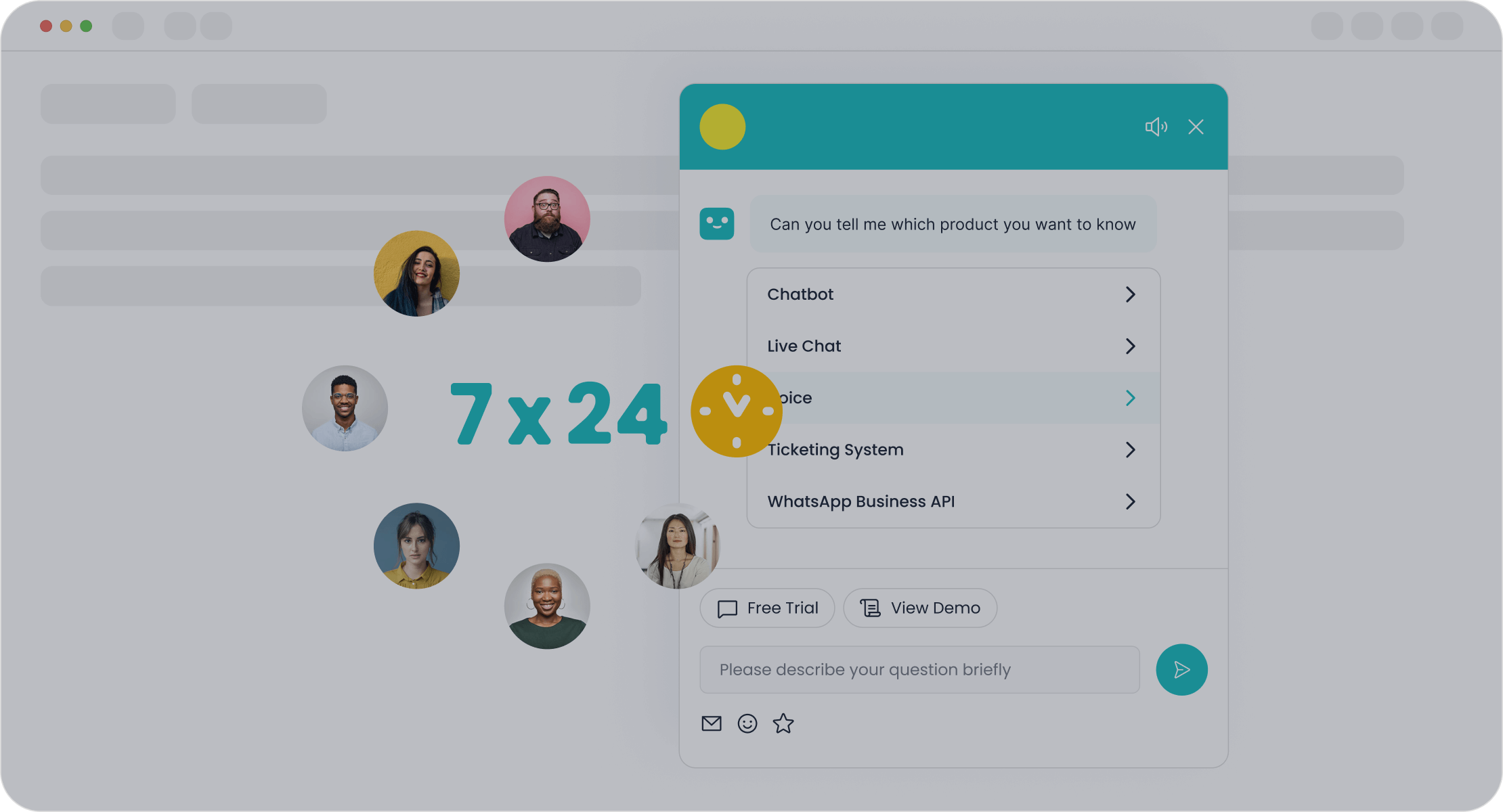How to Calculate Return On Investment for Projects

Return on investment (ROI) serves as a vital metric for assessing project profitability. It helps you determine whether a project generates more revenue than it costs. For example, a marketing project with $200,000 in revenue and $125,000 in costs achieves a 60% ROI, meaning you earn 60 cents for every dollar invested. On the other hand, a project with $100,000 in revenue and $130,000 in costs results in a -23.08% ROI, indicating a loss. By using the formula ROI = (Net Profit / Total Investment) x 100, you can make informed decisions about resource allocation and project viability. Tools like Sobot’s solutions can further enhance your ability to track and optimize ROI effectively.
Understanding Return on Investment (ROI) for Projects
What Is ROI?
Definition of ROI as a profitability metric
Return on investment (ROI) measures how much profit you gain relative to the cost of an investment. It provides a clear percentage that indicates whether an investment is profitable or not. A positive ROI shows profitability, while a negative ROI signals a loss. For example, if you invest $100 and earn $200 in net profits, your ROI is 200%. Similarly, an investment of $10,000 that generates $15,000 in net profits results in an ROI of 150%. These calculations make ROI a straightforward and effective tool for assessing financial outcomes.
How ROI applies to projects and investments

ROI applies to projects by helping you evaluate their financial viability. It allows you to compare different projects and prioritize those with the highest potential returns. For instance, a marketing campaign with a 60% ROI might take precedence over a software upgrade with a 20% ROI. By using ROI, you can ensure that your resources are allocated to initiatives that deliver the most value. Tools like Sobot’s AI-powered chatbot can further enhance your ability to track ROI by automating data collection and providing actionable insights.
Why Is ROI Important for Projects?
Role of ROI in evaluating project success
ROI plays a critical role in determining whether a project achieves its financial goals. By calculating ROI, you can measure the profitability of a project and identify areas for improvement. Tracking ROI throughout the project lifecycle ensures that you stay on course and make necessary adjustments. For example, if a customer service initiative shows a declining ROI, you can reallocate resources or refine your strategy to improve outcomes.
Benefits of ROI in resource allocation and decision-making
ROI simplifies decision-making by offering a quantifiable way to justify investments. Leaders can use ROI metrics to prioritize projects, ensuring that resources are directed toward the most impactful initiatives. Additionally, focusing on ROI builds stakeholder confidence, as it demonstrates a commitment to measurable success. The table below highlights how ROI influences various aspects of project management:
| Aspect | Explanation |
|---|---|
| Justifying Investments | ROI provides a quantifiable way to justify project investments, making stronger cases for funding. |
| Enhanced Decision-Making | Leaders can prioritize projects based on ROI metrics, ensuring resources are allocated effectively. |
| Performance Measurement | Tracking ROI allows for accurate performance measurement and timely adjustments during the project. |
| Building Stakeholder Confidence | Focusing on ROI builds trust among stakeholders, leading to better support for projects. |
| Resource Optimization | Identifying valuable resources through ROI principles enhances overall productivity and efficiency. |
| Long-Term Sustainability | Projects with defined ROI contribute to long-term organizational success and stability. |
| Motivating Teams | Understanding the impact of their work on ROI boosts team morale and productivity. |
By leveraging ROI, you can make informed decisions that maximize profitability and ensure long-term success.
How to Calculate ROI for Projects
Step 1: Identify Total Investment
Include all costs, such as direct, indirect, and opportunity costs.
To calculate ROI, start by identifying the total investment cost. This includes every expense related to the project. Direct costs, such as materials and labor, are straightforward. However, you must also account for indirect costs like utilities, administrative support, and even opportunity costs—the potential benefits you forgo by choosing one project over another.
For example:
- A real estate investment with a purchase price of $600,000 has a total investment cost of $600,000.
- A marketing project with a $250,000 budget uses that amount as its total investment.

Tracking all costs ensures your ROI calculation is accurate. Tools like Sobot’s AI-powered chatbot can help automate cost tracking, reducing errors and saving time.
Step 2: Determine Net Profit
Subtract total costs from total benefits or revenue.
Next, calculate the net profit by subtracting the total investment cost from the project’s total revenue or benefits. Net profit represents the financial gain after covering all expenses.
| Term | Definition |
|---|---|
| Net Profit or Net Income | The total residual income that remains after accounting for all cash flows. |
| Cost of Investment | The total amount spent on the project, including direct and indirect costs. |
For instance, if a project generates $15,000 in revenue and costs $5,000, the net profit is $10,000. This step is crucial for understanding the financial success of your project.
Step 3: Apply the ROI Formula
Use the formula: ROI = (Net Profit / Total Investment) x 100.
Finally, apply the ROI formula to determine the project’s profitability. Divide the net profit by the total investment cost, then multiply by 100 to express ROI as a percentage.
For example, if your project generates $10,000 in profit and costs $5,000, the ROI is:
ROI = ($10,000 / $5,000) x 100 = 200%.

Interpret the ROI percentage to assess project profitability.
A positive ROI indicates profitability, while a negative ROI signals a loss. For example, a marketing campaign costing $6,000 and generating $15,000 in revenue achieves a 150% ROI. This means the project is highly profitable. Using tools like Sobot’s chatbot can streamline ROI tracking by automating data collection and providing real-time insights.
Examples of Project ROI Calculations
ROI for a Marketing Campaign
Calculate costs like ad spend and labor.
To calculate ROI for a marketing campaign, start by identifying all associated costs. These include ad spend, labor, and any tools or platforms used. For example, if you spend $5,000 on ads and $2,000 on labor, your total cost is $7,000. Tracking these expenses ensures an accurate ROI calculation.
Determine net profit from increased sales.
Next, measure the revenue generated from the campaign. Subtract the total cost from this revenue to determine the net profit. For instance, if the campaign generates $15,000 in sales, the net profit is $8,000. Using the ROI formula, the calculation looks like this:
ROI = ($8,000 / $7,000) x 100 = 114.29%.
| Scenario | Investment | Sales | Net Profit | ROI (%) |
|---|---|---|---|---|
| Marketing Campaign | $5,000 | $15,000 | $10,000 | 200% |
This example highlights how marketing campaigns can deliver significant returns when executed effectively.
ROI for a Customer Service Initiative with Sobot Chatbot
Calculate costs of implementing the Sobot Chatbot.
Implementing Sobot’s AI-powered chatbot involves costs like setup, training, and subscription fees. For example, if the total cost of implementation is $10,000, this becomes your investment figure.
Measure benefits like improved customer retention and reduced service costs.

The benefits of using Sobot’s chatbot include reduced inbound discussion volume, higher customer satisfaction, and increased problem resolution rates. For instance, a 20% reduction in discussion volume and a 97% customer satisfaction score demonstrate measurable improvements. These benefits translate into cost savings and higher revenue, boosting ROI.
| Metric | Value |
|---|---|
| Reduction in inbound discussion volume | 20% |
| Customer satisfaction score (CSAT) | 97% |
| Problem resolution rate | 85% |
| Increase in sign-off rate | 35% |
| Increase in COD collection rate | 40% |

By automating routine tasks, Sobot’s chatbot enhances efficiency and profitability, making it a valuable investment for customer service initiatives.
ROI for a Software Implementation Project
Identify investment costs such as software and training.
Software implementation projects require investments in licenses, training, and integration. For example, a logistics company might spend $50,000 on software and $10,000 on training, resulting in a total cost of $60,000.
Measure benefits like cost savings and efficiency gains.
The benefits of software implementation often include reduced operational costs and improved efficiency. For instance, a logistics company might save 10-15% on fuel costs, resulting in long-term ROI.
| Company | Business Challenge | Quantitative Benefits | Long-term ROI (3 Years) | Qualitative Benefits |
|---|---|---|---|---|
| Logistics Company | Need for a custom fleet management system | Fuel Cost Reduction: 10-15% | 140% | Competitive Edge, Improved Retention |
| Oil Company | Advanced analytics tool development | Operational Cost Savings: 8% | 116.67% | Regulatory Compliance, Insights |
This example shows how software projects can deliver both quantitative and qualitative benefits, ensuring long-term profitability.
Best Practices for Accurate ROI Calculations
Use Reliable and Up-to-Date Data
Importance of accurate cost and revenue tracking
Accurate data forms the foundation of reliable ROI calculations. Tracking costs and revenues consistently ensures that your calculations reflect the true financial performance of a project. For example, maintaining uniform data formats across systems prevents discrepancies that could distort ROI results. Metrics like accuracy, completeness, and auditability help you verify the reliability of your data.
| Metric | Description |
|---|---|
| Consistency | Ensures data is uniform across different sources and systems, maintaining standardized formats. |
| Accuracy | Measures how closely data reflects real-world values, crucial for high data quality. |
| Completeness | Assesses whether all necessary data is present, ensuring no critical elements are missing. |
Regularly update ROI calculations as new data becomes available
ROI calculations should evolve with your project. As new data emerges, updating your calculations ensures they remain relevant. For instance, if a marketing campaign generates additional revenue after its initial launch, incorporating this data provides a more accurate ROI. Tools like Sobot’s chatbot can automate data collection, ensuring your calculations stay current and error-free.
Consider Both Tangible and Intangible Benefits
Account for non-monetary benefits like customer satisfaction
ROI often focuses on tangible benefits like revenue, but intangible benefits also play a crucial role. Improved customer satisfaction, for example, enhances brand loyalty and drives long-term profitability. Proxy indicators like Net Promoter Scores (NPS) can help quantify these intangible benefits.
Use qualitative data to complement ROI analysis
A comprehensive cost-benefit analysis should include both quantitative and qualitative data. Tangible benefits like cost savings provide immediate financial insights, while intangible benefits such as better decision-making capabilities offer strategic advantages. For example:
- Improved data quality reduces errors, saving costs.
- Enhanced decision-making leads to better project outcomes.
- Higher employee retention rates lower recruitment expenses.
Leverage Tools Like Sobot for ROI Analysis
Use Sobot's Chatbot to automate data collection and improve efficiency

Sobot’s AI-powered chatbot simplifies ROI tracking by automating data collection. It operates 24/7, ensuring you capture all relevant metrics without manual effort. For example, the chatbot can track customer interactions, providing insights into cost savings and efficiency gains.
Integrate Sobot's solutions for seamless ROI tracking
Sobot’s omnichannel solutions unify data from various platforms, making ROI tracking more efficient. By integrating Sobot’s chatbot with your existing systems, you can streamline data analysis and focus on maximizing project profitability. This approach not only saves time but also ensures your ROI calculations are accurate and actionable.
Challenges and Limitations of ROI Calculations
Measuring Intangible Benefits
Challenges in quantifying customer satisfaction or brand value
ROI calculations often struggle to account for intangible benefits like customer satisfaction, employee morale, or brand value. These factors, while critical to a project’s success, are difficult to quantify in monetary terms. For instance, a customer service initiative may improve satisfaction scores by 20%, but translating this into financial gains can be challenging. Similarly, brand value enhancements from a marketing campaign may not immediately reflect in revenue, making it harder to calculate ROI accurately.
Strategies for incorporating qualitative metrics
To address this, you can use proxy indicators like Net Promoter Scores (NPS) or customer retention rates. These metrics provide a way to estimate the financial impact of intangible benefits. For example, a higher NPS often correlates with increased customer loyalty, which can lead to long-term revenue growth. Tools like Sobot’s AI-powered chatbot can help track these metrics by automating customer interaction data collection, offering insights into both tangible and intangible benefits.
Short-Term Focus of ROI
Limitations of ROI in evaluating long-term projects
ROI tends to focus on short-term profitability, which can be a drawback for projects with extended payback periods. For example, a software implementation project may require significant upfront investment but deliver returns over several years. In such cases, a high ROI might not always indicate the best investment if the payback period is too long.
Complement ROI with other metrics like NPV or IRR
To overcome this limitation, you can complement ROI with metrics like Net Present Value (NPV) or Internal Rate of Return (IRR). These metrics consider the time value of money, offering a more comprehensive view of a project’s financial viability. For instance, while ROI might show a 50% return, NPV can reveal whether the project generates sufficient cash flow over time to justify the initial investment. This approach ensures a balanced evaluation of both short-term and long-term benefits.
Variability in Data Quality
Risks of using incomplete or inaccurate data
ROI calculations rely heavily on accurate data. Incomplete or inconsistent data can lead to misleading results, affecting your ability to make informed decisions. For example, failing to account for indirect costs like administrative support can inflate ROI figures, giving a false sense of profitability.
Importance of thorough data collection and validation
To mitigate these risks, you should prioritize thorough data collection and validation. Using reliable tools like Sobot’s chatbot can streamline this process by automating data tracking and ensuring consistency. For instance, the chatbot can monitor customer interactions across multiple channels, providing a unified dataset for ROI analysis. This reduces errors and enhances the reliability of your calculations, enabling better decision-making.
Tips for Improving ROI Tracking and Management
Align ROI Goals with Business Objectives
Ensure ROI calculations reflect strategic priorities.
Aligning your ROI goals with your business objectives ensures that every project contributes to your overall strategy. For example, if your company prioritizes customer retention, focus on projects that improve customer satisfaction and loyalty. This alignment helps you calculate ROI in a way that reflects your strategic priorities. Tools like Sobot’s Chatbot can assist by automating data collection, ensuring your ROI calculations are accurate and aligned with your goals.
Set realistic ROI benchmarks for projects.
Setting realistic benchmarks allows you to measure success effectively. Unrealistic expectations can lead to poor decision-making and wasted resources. For instance, a customer service project might aim for a 20% cost reduction rather than an unattainable 50%. Use historical data and industry standards to set achievable benchmarks. Sobot’s analytics tools can provide insights into past performance, helping you establish practical ROI targets.
Regularly Review and Adjust ROI Metrics
Monitor ROI over the project lifecycle.
Tracking ROI throughout a project’s lifecycle ensures you stay on course. Regular monitoring helps you identify trends and make adjustments as needed. For example, if a marketing campaign shows declining returns, you can reallocate resources to improve performance. Sobot’s Chatbot simplifies this process by providing real-time data on customer interactions and project outcomes.
Adjust calculations based on changing circumstances.
Projects often face unexpected changes, such as market shifts or increased costs. Adjusting your ROI calculations ensures they remain accurate and relevant. For instance, if a software implementation project incurs additional training costs, update your calculations to reflect the new investment. Sobot’s solutions integrate seamlessly with your systems, making it easier to adapt your ROI metrics to evolving conditions.
Enhance ROI Tracking with Sobot's Chatbot
Automate customer interaction tracking with Sobot's Chatbot.
Sobot’s Chatbot automates the tracking of customer interactions, reducing manual effort and errors. It operates 24/7, capturing data across multiple channels like WhatsApp and SMS. This automation improves efficiency and ensures you have accurate data for ROI analysis. For example, Sobot’s platform achieves 80% correct answers and a 95% customer satisfaction rate, demonstrating its ability to enhance ROI tracking.
Use Sobot's analytics to gain actionable insights.
Sobot’s advanced analytics provide actionable insights that help you optimize your ROI. The platform resolves 85% of problems while maintaining 99% customer happiness. Additionally, it boosts sign-off rates by 35% and COD collection rates by 40%. These metrics highlight how Sobot’s Chatbot improves project profitability and efficiency.
| Example Description | Key Metrics |
|---|---|
| Sobot's AI platform achieved over 80% correct answers and 95% customer satisfaction. | 80% correct answers, 95% satisfaction |
| 85% of problems resolved with 99% customer happiness. | 85% problem resolution, 99% happiness |
| Sign-off rate increased by 35% and COD collection rate by 40%. | 35% sign-off increase, 40% COD increase |
By leveraging Sobot’s Chatbot, you can streamline ROI tracking and focus on maximizing the profitability of your projects.
Return on investment (ROI) is essential for evaluating the profitability of your projects. It helps you determine whether a project is financially viable and ensures resources are allocated effectively. Calculating ROI upfront provides clarity on potential returns, reducing risks and building trust among stakeholders. For example, digital marketing agencies use ROI to optimize campaigns and drive growth for small businesses. Following the steps—identifying total investment, determining net profit, and applying the ROI formula—simplifies this process. Tools like Sobot’s Chatbot enhance accuracy by automating data collection and providing actionable insights. Start applying ROI calculations to your projects today to make informed decisions and achieve measurable success.
FAQ
What is the ideal ROI percentage for a project?
An ROI above 50% is generally considered excellent, but it depends on your industry and project type. For instance, marketing campaigns often aim for 100% ROI, while long-term software projects may target 20-30%. Use tools like Sobot’s chatbot to track and optimize your ROI effectively.
How can you calculate ROI for intangible benefits?
You can use proxy metrics like Net Promoter Scores (NPS) or customer retention rates. For example, a 10% increase in NPS often correlates with higher revenue. Sobot’s AI-powered chatbot helps you track these metrics by automating customer interaction data collection, ensuring accurate ROI analysis.
Can ROI calculations include opportunity costs?
Yes, ROI should account for opportunity costs. These represent the benefits you forgo by choosing one project over another. For example, if you invest $10,000 in Project A instead of Project B, the potential profit from Project B becomes an opportunity cost. Tools like Sobot simplify cost tracking for better ROI accuracy.
How often should you update ROI calculations?
You should update ROI calculations regularly, especially when new data becomes available. For example, if a marketing campaign generates additional revenue after its launch, revise your ROI. Sobot’s chatbot automates data collection, ensuring your calculations stay current and accurate.
What are the limitations of ROI as a metric?
ROI focuses on short-term profitability and may overlook long-term benefits. For example, a project with a 10-year payback period might show a low ROI initially. Complement ROI with metrics like Net Present Value (NPV) for a comprehensive evaluation. Sobot’s analytics tools help you track both short- and long-term metrics seamlessly.
See Also
Essential Steps for Setting Up IVR Software Effectively
Comparative Analysis of Live Chat Support Expenses
Best 10 VoIP Solutions Tailored for Small Enterprises
Enhancing Call Center Efficiency Through Effective Monitoring